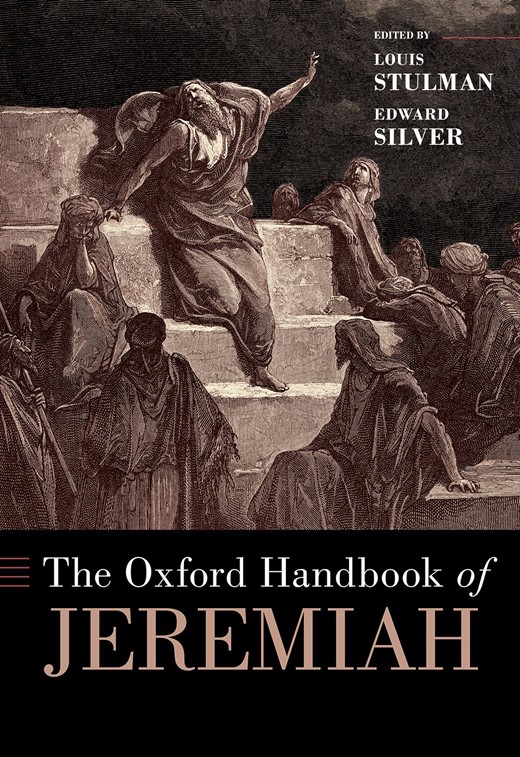 The Oxford Handbook of Jeremiah
The Oxford Handbook of Jeremiah
Contents
Part front matter for Part V Reception Engagements
-
Published:November 2021
Cite
In her recent book on the reception history of Jeremiah in art, Mary Callaway makes an eloquent case that the prophet Jeremiah “speaks to the present, whenever that is.”1 Interpreters have long drawn attention to Jeremiah’s striking relevance to their own time and place. Even historical-critic William L. Holladay maintained that the prophet, though rooted in the first place in his own historical setting, “speaks to us in [a] … more special and direct way than to his own time.”2
The essays in this section investigate the nachleben or afterlife of the book of Jeremiah in various cultures, texts, and traditions. Elizabeth Boase examines “the rise and fall of Jeremiah as the author of Lamentations.” Devorah Dimant speaks to the prominent role of Jeremiah’s prophecies in Qumran texts. Catrin H. Williams studies “the various modes of reference” to the prophet Jeremiah and to his oracles in the New Testament. Roberto Tottoli considers the prophet Jeremiah in Islamic thought, as reflected in both the Qur’ān and in post-Qur’ān literature. Rüdiger Görner analyzes the poetic and rhetorical import of “the Jeremiah myth” in Rainer Maria Rilke’s Neue Gedichte (1907) and in Stefan Zweig’s Jeremias (1917). Bungishabaku Katho focuses our attention on Jeremiah interpretation in subaltern contexts, with particular attention to “reading the complex book of Jeremiah by the church and the ordinary reader in the context of poverty, suffering, and corruption, especially in Africa.” Mary Chilton Callaway explores the prophet Jeremiah in art, with representations as early as “a third-century ce synagogue fresco … to the twenty-first-century statue carved from local stone by a sculptor in Zimbabwe.” Carolyn J. Sharp considers the homiletical reception of four passages in the book of Jeremiah, from the early church to the present. She observes that the “pathos and persistence of Jeremiah as prophetic leader, his entanglement in the political and theological contestations of his era, and his visionary capacity to see the grim depths of sin and the luminous hope of God’s mercy … have made the book of Jeremiah a treasure trove for preachers seeking to speak fresh words of Gospel truth to their own communities.” Each chapter in this section thus offers the reader a lens through which to view Jeremiah’s wide and varied influences within Jewish, Christian, and Islamic communities, together with its re-performances in art and literature.
| Month: | Total Views: |
|---|---|
| March 2024 | 7 |
| April 2024 | 3 |
| June 2024 | 1 |
| July 2024 | 3 |
| September 2024 | 5 |
| November 2024 | 2 |
| February 2025 | 1 |
| March 2025 | 1 |
| April 2025 | 5 |
| May 2025 | 3 |